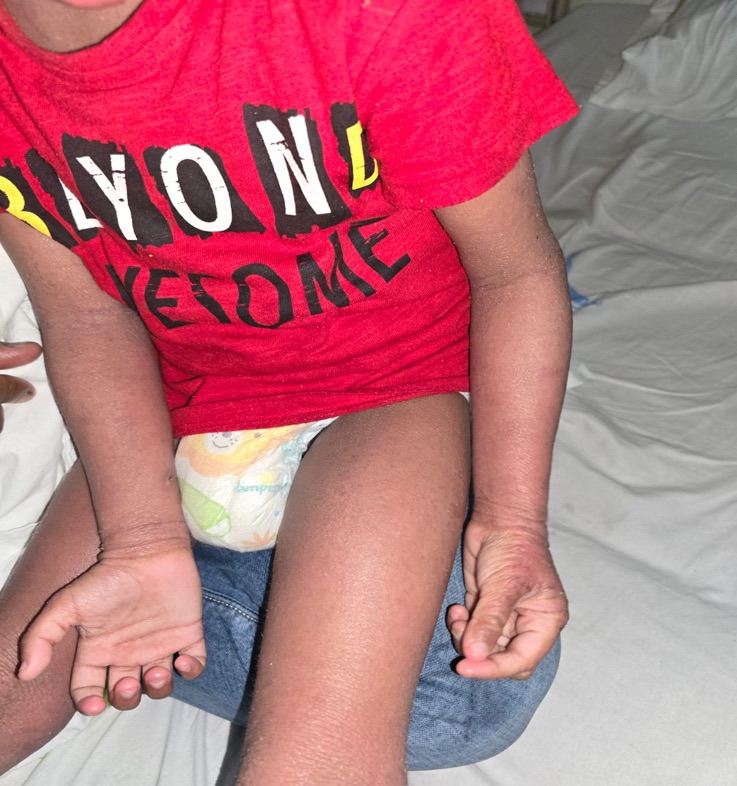Dr Jerin.K.John, Dr Vinitha Varghese (DermatologyAIMS)Panikar, Dr C.Jayakumar
A four-year-old developmentally normal child, a known wheeze with h/o allergy to wheat, legumes, and spices, presented with generalized scaling, redness, and itchy skin lesions all over the body for the last six months.
He had a history of similar complaints at one month of age that was initially over the cubital fossa and popliteal fossa and later progressed to legs, neck, and axillary flexures.
It was waxing and waning in nature.
He was getting both oral and topical steroids.
He also had a similar episode at two years of age and was treated with tacrolimus, mometasone, and antihistamines.
The child was on complementary and alternative system of medicine and was brought with extensive erythema and exfoliation with few punched-out skin erosion over the face, neck, and bilateral upper and lower limbs.
His clinical examination was WNL other than extensive skin lesions
His auxolology was normal
Blood counts showed leukocytosis(16K) and increased IgE levels (>2500)
Differential Diagnosis
1. Contact dermatitis (irritant or allergic)
2. Seborrheic dermatitis
3. Psoriasis
4. Nummular eczema
5. Allergic contact dermatitis
6. Scabies
7. Dermatophytosis (fungal infection)
8. Lichen simplex chronicus
9. Dyshidrotic eczema (pompholyx)
10. Ichthyosis



He was admitted and treated with antibiotics, oral steroids; prednisolone )at a dosage of 0.75mg/kg, and antihistamines and was discharged on the same.
Third dosage of stepsons and immunosuppressives were related down with clinical improvement
Atopic eczema, also known as atopic dermatitis, is a chronic inflammatory skin condition characterized dry, itchy, and scaly patches on the skin.
The condition can affect any part of the body, but it typically affects the skin folds of the elbows, knees, and neck.
The itching can be intense and may lead to scratching, which can further damage the skin and increase the risk of infection.
The exact cause of atopic eczema is unknown, but it’s believed to be related to genetic and environmental factors.
People with a family history of atopic conditions such as asthma, hay fever, or eczema are at higher risk of developing this condition.
Environmental factors such as exposure to allergens, irritants, and microbes can also trigger or exacerbate the condition.
The diagnosis of atopic eczema is typically based on the patient’s medical history, physical examination, and sometimes patch testing or blood tests to rule out other conditions.
The condition is often managed with a combination of approaches, including:
Skin care: Keeping the skin moisturized and avoiding triggers such as harsh soaps, detergents, and chemicals can help reduce symptoms.
Medications: Topical corticosteroids, antihistamines, and immunosuppressants may be prescribed to reduce inflammation, itching, and the risk of infection.
Newer drugs used in treatment are Apremilast, Delgocitinib and Abrocitinib.
Phototherapy: Exposure to ultraviolet light can help reduce inflammation and itching.
